In the effort to save a few £/$/€, it’s possible to take a convoluted route between these two points on the map. In this post, join me as I travel from my current home neighbourhood in the East of Montreal to my original home in the suburbs of North London… via Paris!
First of all, you can check out this short video I made, and then read on to learn more.
ℹ️ I wrote this post after a trip I took last year. Obviously with the current COVID-19 situation, I feel compelled to state none of us should be making trips like this unless they absolutely can’t be avoided. Stay safe everybody!
In my journey here, I’d opted to use only public transit – except the transatlantic flight and the Eurostar. For various reasons, the trip had to be planned at the last minute, hence the unusual route. So, how did it go?
The Grand Journey Begins!
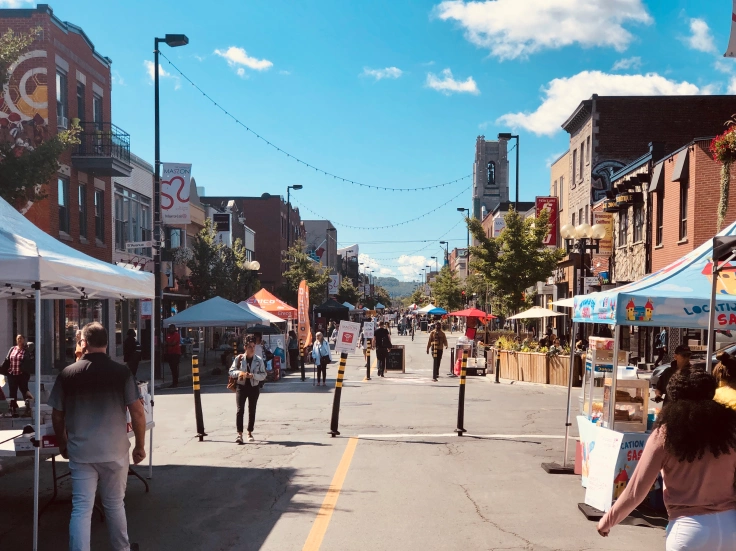
My local high street happened to be having its seasonal street fair on the day I was leaving. The road was closed to traffic, the street was lined by stalls belonging to local businesses and the sun was out. All of which made for a particularly pleasant start to the trip. Getting to the airport from my side of town involved a bus, a Metro ride and then the longer airport bus. My local bus route delivered me to the Metro, where I made my way from East to West through downtown until reaching Lionel-Groulx station for my connection to the airport bus. So far, so like a commute (but with a heavy suitcase).
The 747 (a bus, not a plane)
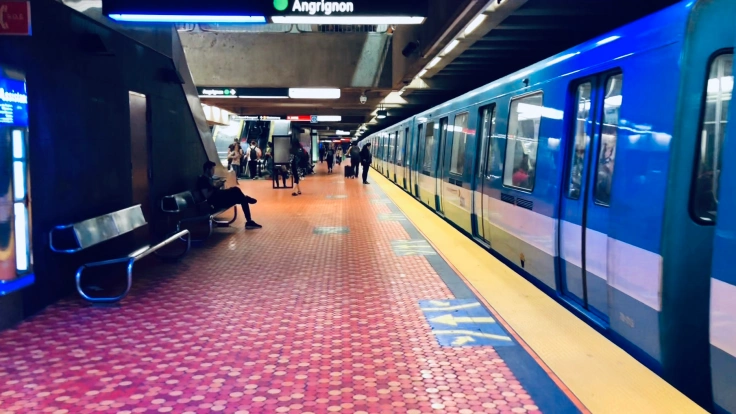
Incredibly for a city the size and scope of Montreal, there’s no rail connection between downtown and the airport. The options at the current time are between a cab, or the 747 airport bus.
The said bus departs from Berri-UQAM Metro on the Eastern edge of downtown, and makes its way through the downtown core to intersect with Lionel-Groulx Metro station on the city centre’s Western edge. After that it runs non-stop to the airport.
Which leaves travellers with an interesting dilemma. Take the bus from Berri-UQAM at the beginning of its route, and they’re more likely to find a seat and have space for their baggage. But, they’ll be stuck in Montreal’s notoriously awful traffic, which isn’t pleasant in hot weather.
However, if they decide to leap-frog the bus by taking the much faster Metro to Lionel-Groulx, they’ll find the busses arriving packed with travellers already. The bus driver will only let people on with luggage provided there’s still luggage space available. In my case, I had to skip the first bus to arrive, although I was one of two lucky people with suitcases to get on the second one.
And as expected the bus was absolutely rammed to the hilt, with proper sardine efficiency when it came to cramming people in. With so many road works between downtown and the airport, the bus crawled through dreadful West-Island traffic and took over an hour to get to its destination. Definitely my least favourite segment of this epic trip, and I can’t wait until the day Montreal finally gets a rail link.
Montreal Airport
In the years I’ve been living in this city, Montreal’s airport has improved and improved until its almost become a pleasant place to wait out your flight. Once through the respective circles of hell known as checkin and security, the newly opened international section is spacious with plenty of seating and lots of natural light. It even a sizeable children’s play area. If like me you arrive at the airport well in advance of your flight, this makes a pleasant environment to wait out your departure. And then, with darkness having now fallen, it was time to board.
Air Transat

Air Transat is about as close as you can get to EasyJet or Ryanair in Canada. The country’s no-frills airline will fly you between various points in Canada and Europe for less than the larger airlines such as Air Canada. However, they do pack you in, and you won’t get a lot of leg room or space to stretch out.
That said, I was fortunate to have a window to my left, and an empty seat to my right. There’s not much to see flying over Eastern Canada at night once you’ve passed away from the bright lights of Montreal. I presume we were flying just North of the St. Lawrence river, and the major towns and cities would have been on the other side of the plane, so all I saw was darkness. The flight was peaceful, save a prolonged period of mild turbulence after flying past Quebec City. Food was good enough for standard class, and the cabin crew were excellent.
As seasoned transatlantic travellers know, when flying from North America to Europe you essentially end up with a shortened night of just few hours. This is where jet lag can really get you, as the human body-clock struggles to deal with a day which is less than 24 hours (going the other way is easier).
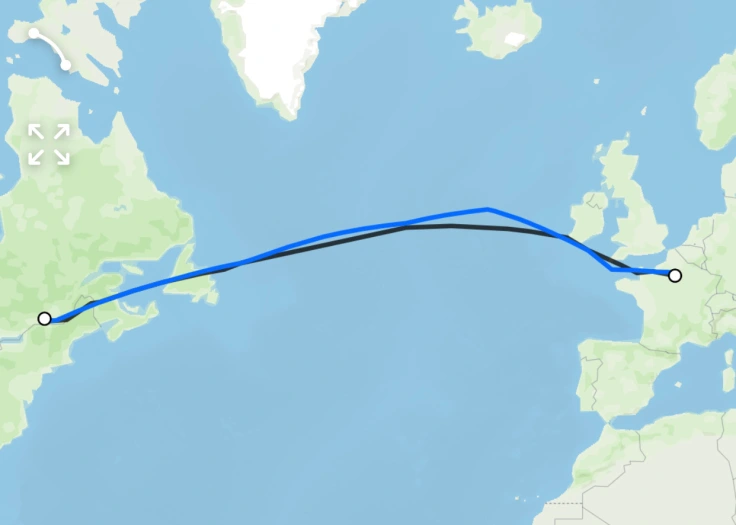
I tracked by route from Montreal to Paris with an app called Flighty. The black line shows the planned route, with the blue one showing the actual route taken.
So, after taken off, my strategy for managing jetlag began. I set my iPhone and watch to the destination time (in this case Paris) and since it was already dark outside, I start thinking as if I’m in the destination timezone. My flight had left around 8pm EDT, and with Paris 6 hours ahead I had to begin thinking that it was 2am in the morning.
After food was served it’s time to get some sleep, as we were looking at getting on to 4am destination time. The trick is to get as much snooze as possible before arrival, because once starting the day in the morning local time, it’s important to stay awake until bedtime to avoid full-on jet-lag.
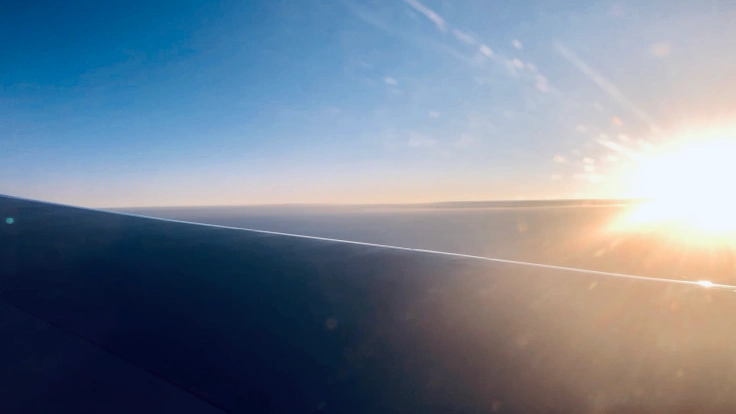
Paris Charles-de-Gaulle
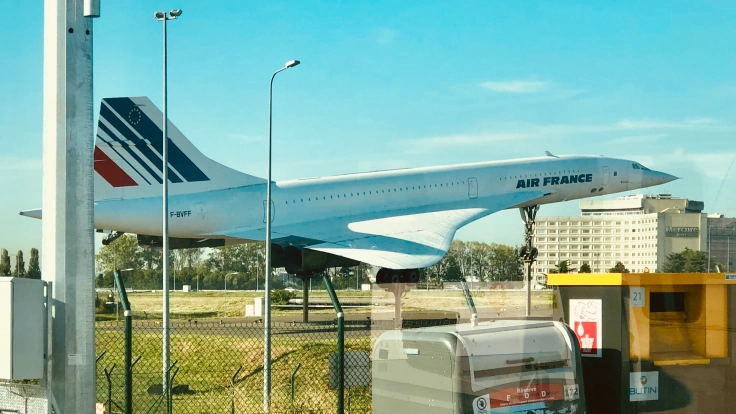
The main drawback to flying with Air Transat is having to arrive and depart from Charles-de-Gaulle’s terminal 3. As the airport’s budget terminal, there are no proper boarding gates and so buses ferry passengers between plane and terminal. This leads to long waits and really inefficient boarding and disembarkation. The terminal itself is cramped and looks run down, and once you’ve made it through border control and grabbed your bag, you have a reasonable outdoor walk from the terminal building to get anywhere useful, such as the rail stations.

You’re Not Going to See Paris
So, even though Paris is a waypoint on your trip, you won’t actually see Paris itself.
This is reminiscent of another trip I did a while back from Montreal to Washington D.C. via New York City, where I didn’t actually get to see NYC at all. You see, Charles De Gaulle airport being to the North-West of Paris, and Gare du Nord being (you guessed it!) North of the city centre, you won’t experience much of Paris. What you will get to enjoy are the suburbs on your way in, and then once again (but more quickly) on the Eurostar heading out.
The system serving the suburbs of Paris is known as the RER. And, Line B will take you directly from the airport to Gare du Nord. Time it well, and you’ll get an express service with a minimal number of stops. Some of the research I did before travelling warned me that this particular line is rampant with pickpockets, which leads into a little anecdote.
I was boarding the train which had just arrived at the airport station. After lugging my suitcase to my seat and taking off my backpack, I noticed someone on the platform struggling to board the train. She had several large plastic bags and a grocery basket with wheels. As the doors began to beep she somehow managed to heave herself and belongings onto the train, collapsing in a heap in the vestibule with a large amount of what I presume was French swearing (I’m accustomed to Québec French which is very different, so I wasn’t too familiar with how people curse in Paris).
Another passenger came running over to help, and as we were trying to help her up, my mind suddenly flashed back to the web page I’d read on Paris pickpockets. It is, the page said, a common distraction scam to create a scene like the one I’d just witnessed to lure travellers away from their luggage, whilst another pickpocket quietly removes the luggage and jumps off the train before it moves off.
I turned around; My bags were still safe! And it seems our help wasn’t wanted when both I and the other passenger received some of the aforementioned cursing, as she had now managed to get herself standing and was gathering her belongings. Sitting in the seat adjacent to me for the ride, she was talking to herself loudly for the duration. Ah, Paris. Clearly not a dull city!
So, minor drama aside, as I watched out of the train window, there was no Eiffel Tower, Arc de Triomphe or Louvre. Instead, you’ll trundle through such places as Sevran, Drancy and Saint-Denis. Places I’m told no true Parisian would consider part of true Paris.
Eventually, your train will arrive beneath Gare du Nord, an impressively gargantuan station whose lower echelons mostly smell of wee-wee.
Paris Gare-du-Nord
Assuming you don’t get lost in the station – I did multiple times, in spite of having survived Tokyo station in days’ past – you’ll make it upstairs to the station’s main concourse and then up another level to the Eurostar terminal. Here you’ll have to show your passport twice. Once to a French border officer as you exit France and therefore the Schengen Area, and secondly you’ll enter the UK, even though your mind, body and soul will still remain in the French capital for a while longer.
Historically, when the Eurostar first opened, trains would arrive in London at Waterloo. At the time, the part of London known as the South Bank was even less welcoming as was Gare du Nord, so it seemed symmetrical that both terminals shared a gritty quality. Of course, these days London has the shiny St. Pancras International, and so Gare-du-Nord perhaps has some catching up to do.
The post-border departure area is cramped and really badly laid out. If you arrive just ahead of the prior departure, you’ll find it pretty difficult to navigate around the hordes of queueing travellers waiting to board their train. After the departure lounge had cleared out, there are a few cafes and a seating area to await your train.
Eurostar
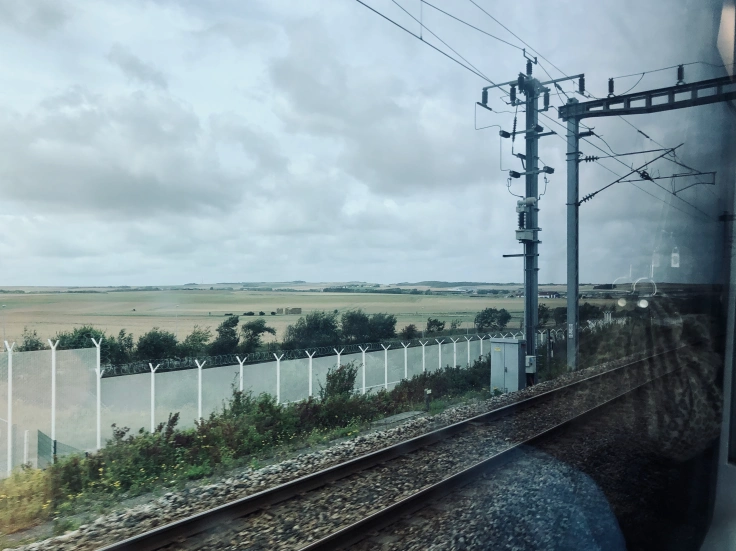
I love the Eurostar. Returning from Canada – a country which for all its many virtues isn’t great at trains – it’s a delight to race across my home continent à Grande Vitesse. The Eurostar itself is basically the equivalent of the TGV in terms of technology and speed, and the newer trains are pretty comfortable.
If you failed at the seat lottery and snagged an isle seat, once your train has made its way out of Paris you can just switch to grab an unoccupied window seat and enjoy the regional views of Île-de-France and Hauts-de-France. The route takes you through Lille and then up to Calais, where it’ll duck into the tunnel with the longest underwater section in the world. The train doesn’t travel full speed under the English Channel, and so after roughly 30 minutes of darkness (I didn’t really time it) the train emerges near Folkestone in Kent. This would be the first point on this journey where I’d actually left the Francophonie!
The distance from the portal of the Channel Tunnel tunnel to London is much shorter than the leg from Paris, and will take you through the towns of Ashford and Ebbsfleet, likely making a stop in one or the other. Kent is perhaps not the most picturesque of England’s counties, although some sights of interest are the River Medway, and the impressive Dartford Bridge on the approach to London. The last bit of the journey is completely underground, as the train ducks into tunnel near Dartford and doesn’t emerge into daylight again until just before arriving at St Pancras International.
London St. Pancras International
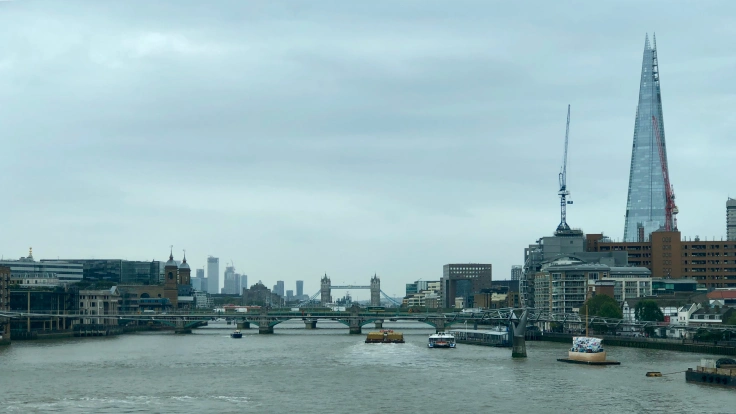
In contrast to dingy Gare du Nord, London St. Pancras is an impressive and quite pleasant place to arrive in. Coming off the train, there’s no border or customs to worry about since you cleared them in Paris.
I was fortunate enough to be greeted by a good friend on arrival, and we headed to one of the very cosy cafes within the station before grabbing lunch and beer at the station pub.
The Final Mile
The Tube; Even though I grew up with these trains, they now appear tiny after so many years frequenting Montreal’s metro. They’re also insanely noisy now. I mean like the kind of loudness you think will leave you deaf if you’re exposed to it every day. This seems to be a new feature of the tube.
Taking the Northern Line, it emerges into daylight in leafy Finchley, covering the central and Western parts of this large and ancient parish of North London. I then had a short walk through the local streets to where my parents live. Afterwards, I collapsed.
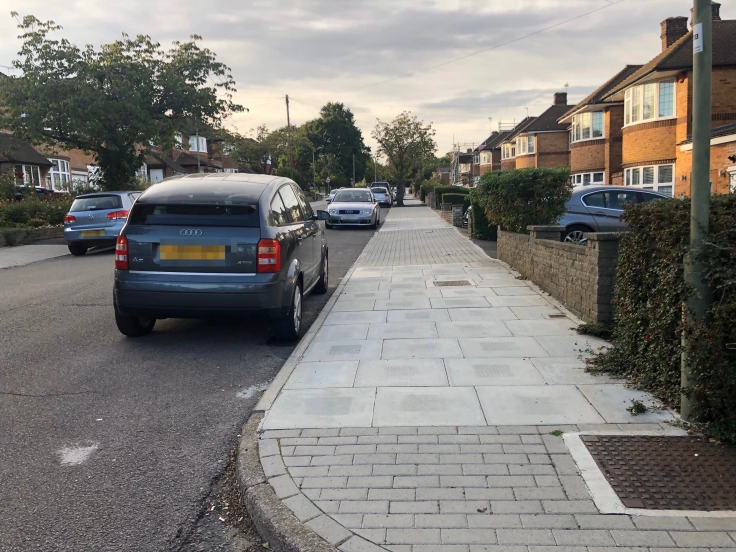
Should You Do It?
Well, It is tiring. You realise the moment you see your Paris-bound flight clipping Cornwall on the moving map in your aeroplane seat’s screen, that if you’d shelled out a bit more money you’d be only 20 minutes away from arriving at your final destination. Instead, you’ll have to fly a bit further, brave Paris’ rickety suburban trains and pass through a second round of immigration at Gare-du-Nord before a 2 hour train journey.
Coming back is more stressful as there exists small risk of missing your flight due to the need to take an early Eurostar back to Paris. A more sensible option for the return journey is to travel to Paris the day before and stay overnight, but of course once you factor in the hotel costs, are you really saving any money over just getting a direct flight?
Another gotcha for Canadian permanent residents like myself is neither on-line nor self-checkin will work for the return leg. This is because permanent residents require neither a Canadian passport nor an eTA to travel to Canada, and yet automated system doesn’t support the permanent residency card. And so, you’ll have to present yourself the airport to be checked in manually and will lose your preferred choice of seat – I got one of those “fake” window seats with no actual window which everyone avoids like the plague. It also didn’t help that two earlier Canadian bound flights had been cancelled, so the airport terminal was packed, boarding was painfully slow and every seat was taken on the flight.
In short, I didn’t find the return trip nearly as exciting as the outbound one. Overall, it’s a fun adventure for sure, and worth doing if you really need to shave every dollar from your trip. But I suspect for most people, it’s just less of a hassle to fly direct, and it’s likely what I’ll do next time, especially when I’m travelling with my family.
One thing I did learn after the fact, is I could have taken a TGV directly from Paris Charles de Gaulle to Lille, and made the Eurostar connection there. It would have avoided the hassle of travelling in to Paris on a suburban train, and sounds a lot less stressful.
Notes on Making the Video
I filmed the clips on my iPhone 8 Plus throughout my journey, the plan being to trim them all to 5 second lengths and stitch them together.
It’s actually quite tough to get stable footage when you’re dragging a large suitcase and have a heavy bag slung over your shoulder. Editing the videos in iMovie on the Mac, I could use iMovie’s video stabilisation feature to try and compensate for my wonky filming. But, in some cases the shaking was so bad stabilisation made it end up looking worse. Still, it gives an overview of what was a long but interesting trip and I hope you enjoyed it!